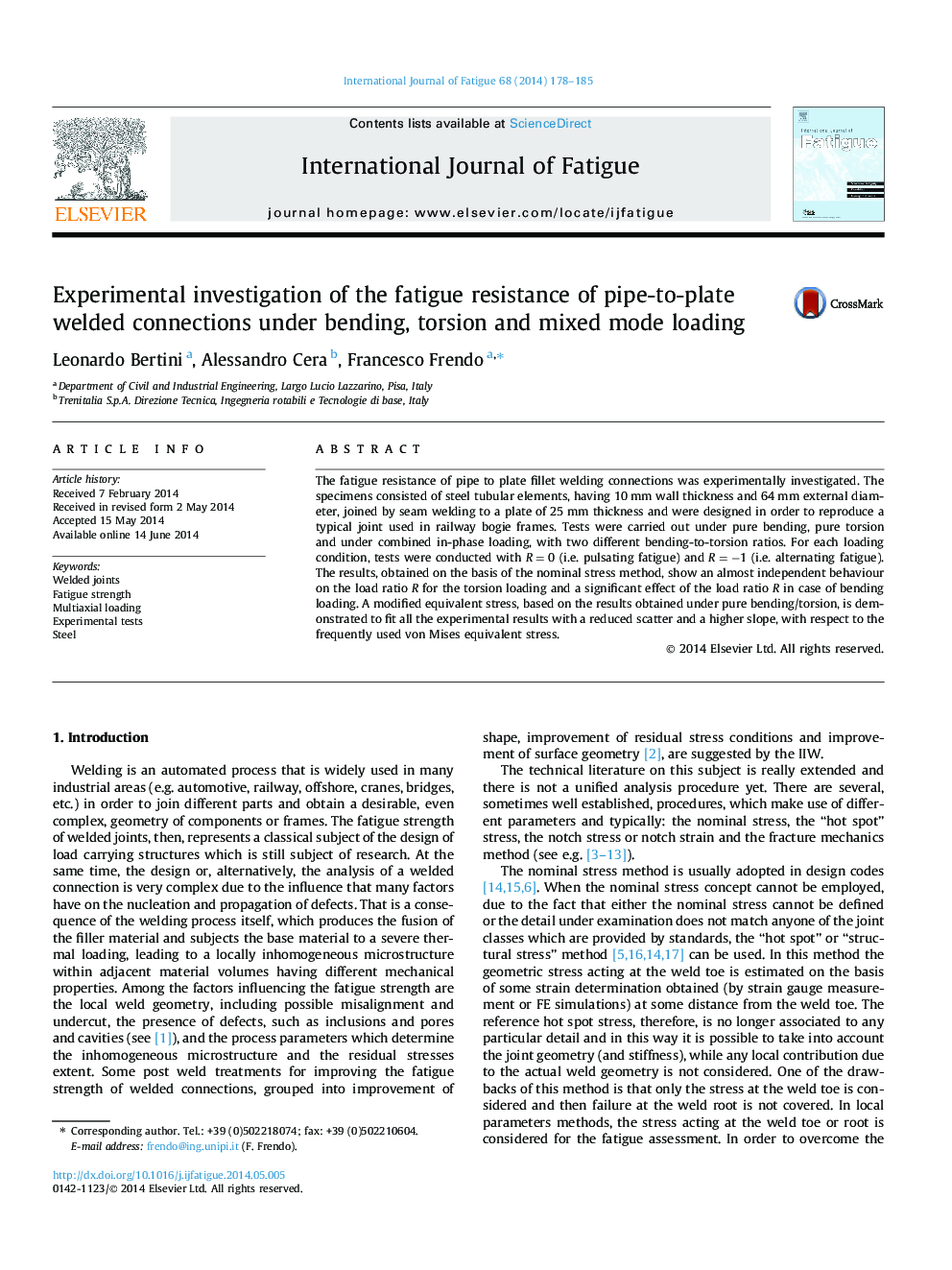| Article ID | Journal | Published Year | Pages | File Type |
|---|---|---|---|---|
| 775139 | International Journal of Fatigue | 2014 | 8 Pages |
•The fatigue resistance of a welded joint is experimentally investigated.•Tests were conducted in pure bending pure torsion and under combined loading.•Tests were analysed by the nominal stress concept and compared to standards.•A modified equivalent stress is proposed for combined loading conditions.•The modified equivalent accounts for the different endurances obtained for R = −1 and R = 0.
The fatigue resistance of pipe to plate fillet welding connections was experimentally investigated. The specimens consisted of steel tubular elements, having 10 mm wall thickness and 64 mm external diameter, joined by seam welding to a plate of 25 mm thickness and were designed in order to reproduce a typical joint used in railway bogie frames. Tests were carried out under pure bending, pure torsion and under combined in-phase loading, with two different bending-to-torsion ratios. For each loading condition, tests were conducted with R=0R=0 (i.e. pulsating fatigue) and R=-1R=-1 (i.e. alternating fatigue). The results, obtained on the basis of the nominal stress method, show an almost independent behaviour on the load ratio R for the torsion loading and a significant effect of the load ratio R in case of bending loading. A modified equivalent stress, based on the results obtained under pure bending/torsion, is demonstrated to fit all the experimental results with a reduced scatter and a higher slope, with respect to the frequently used von Mises equivalent stress.
